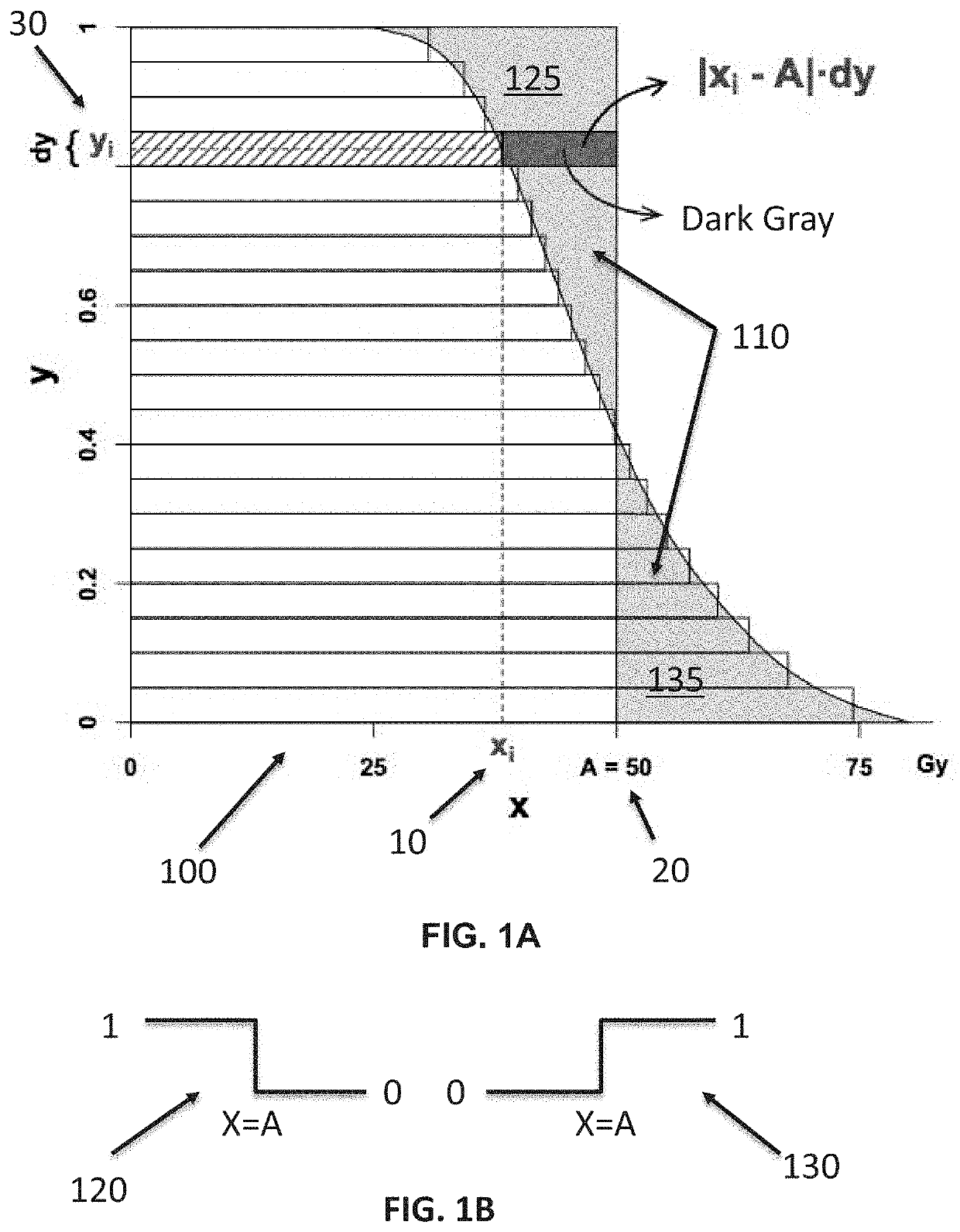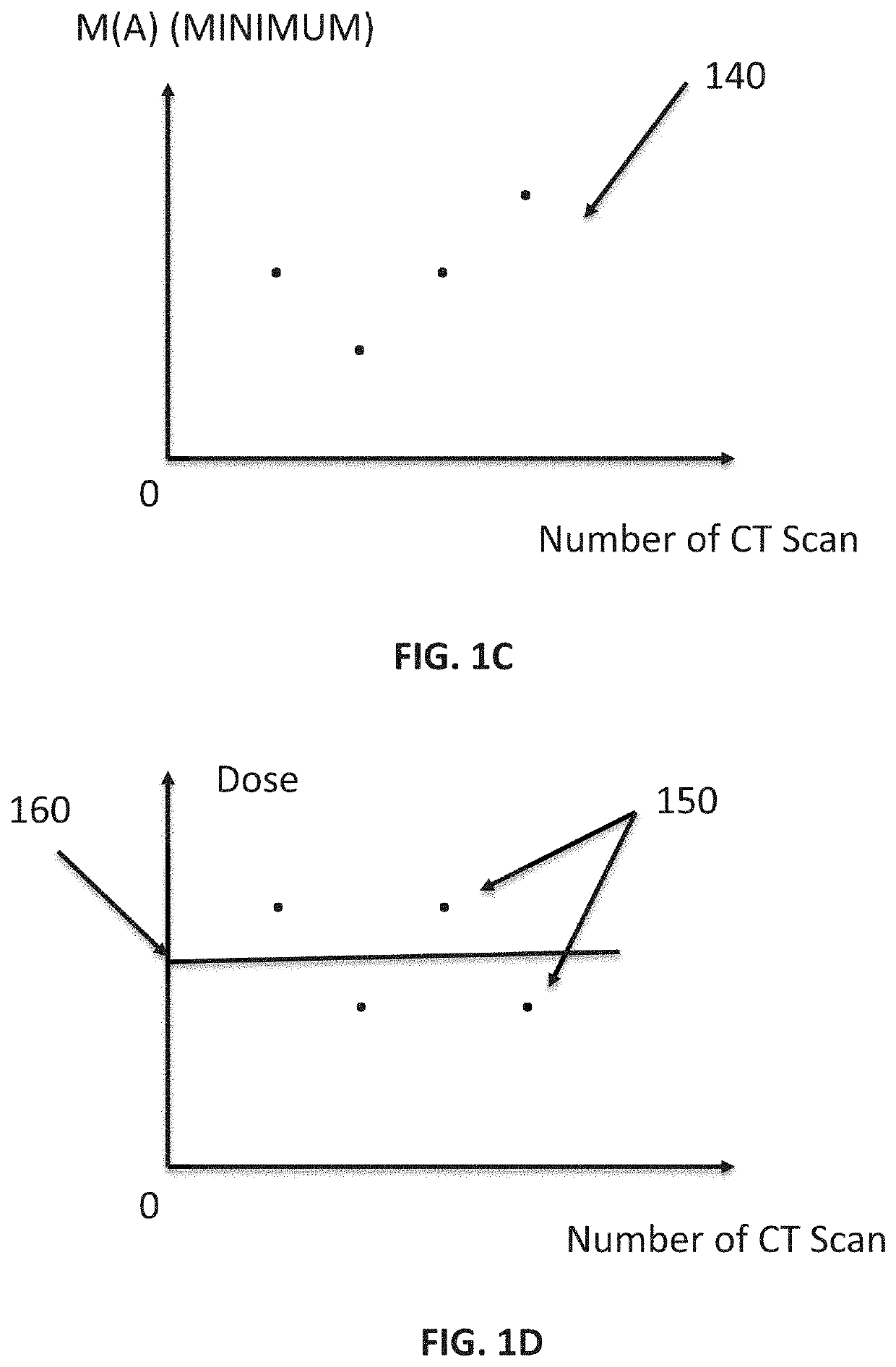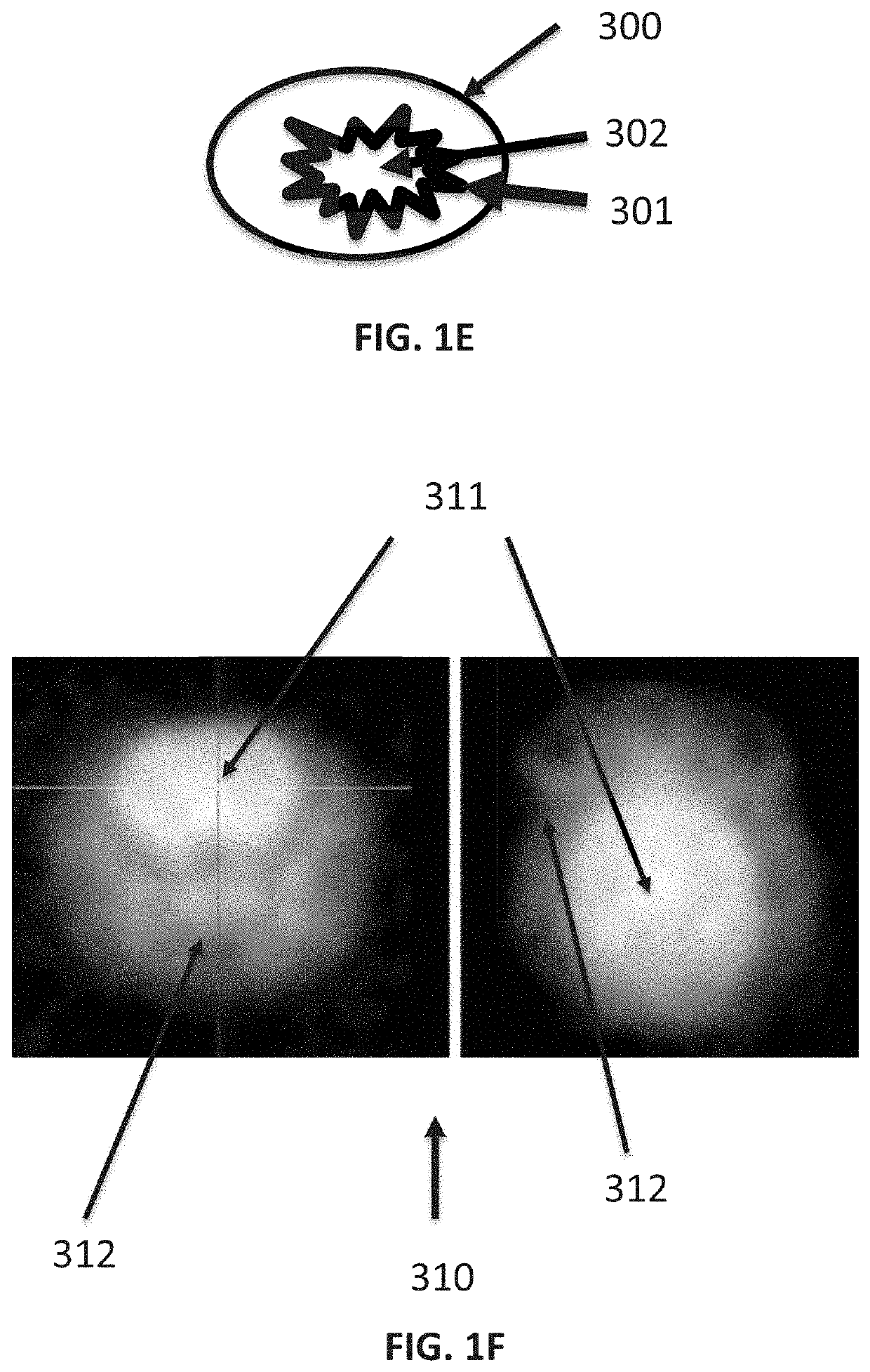Calibration of radiation therapy treatment plans for a system
a radiation therapy treatment plan and system technology, applied in radiation therapy, medical science, therapy, etc., can solve the problems of no unified formal proof presented, no unifying metric tool provided,
- Summary
- Abstract
- Description
- Claims
- Application Information
AI Technical Summary
Benefits of technology
Problems solved by technology
Method used
Image
Examples
application examples
[0070]FIGS. 1A and 2 show the area M (A:A=50 Gy) for a target in which the prescribed dose is 50 Gy, any dose different from 50 Gy is a deviation from the prescription. Note that owing to the use of absolute deviation, there is no dependence on the sign of the deviation. Whether the deviation is a lack of dose (FIG. 1A) or an excess of dose (FIG. 2), the computational procedure is the same. FIG. 3 shows the area M (A:A=0 Gy) for an organ at risk. Note that physically, there can be no negative dose, hence there is no 0 to a non-target structure is an excess dose.
[0071]The MADD was applied to the case of a right breast cancer patient receiving post-conserving surgery adjuvant radiation with a volumetric arc technique. The dose prescribed to the breast was 42 Gy over 15 fractions, with a simultaneous integrated boost resulting in a cumulative dose of 51 Gy to the tumor bed. FIGS. 4A-4F shows the DVH for the breast planning target volume (“PTV”), the tumor bed, the heart, the ipsilatera...
PUM
 Login to View More
Login to View More Abstract
Description
Claims
Application Information
 Login to View More
Login to View More - R&D
- Intellectual Property
- Life Sciences
- Materials
- Tech Scout
- Unparalleled Data Quality
- Higher Quality Content
- 60% Fewer Hallucinations
Browse by: Latest US Patents, China's latest patents, Technical Efficacy Thesaurus, Application Domain, Technology Topic, Popular Technical Reports.
© 2025 PatSnap. All rights reserved.Legal|Privacy policy|Modern Slavery Act Transparency Statement|Sitemap|About US| Contact US: help@patsnap.com



